
1889: The Great Fire and Revival in Spokane
The Great Fire of Spokane, which happened 125 years ago this week, gave Spokane Falls what many feared was its "death blow." It destroyed most of downtown, reducing it to a tent city. The property damage was estimated at around $5 million or $6 million, but about half was covered by insurance. The post-fire land was actually worth more than it was before, since many destroyed buildings were old and rickety and had already "outlived their usefulness." At the end of 1889, the city's board of trade estimated that 500 buildings were under construction within the fire limits, mostly "in solid brick or stone, from three to seven stories high."As 1889 drew to a close, it became clear that Spokane Falls had dodged its "death blow." The rickety wood-framed town of 1888 had become the sturdy brick-built city of 1890. Spokane Falls had come of age.
Section:Picture story
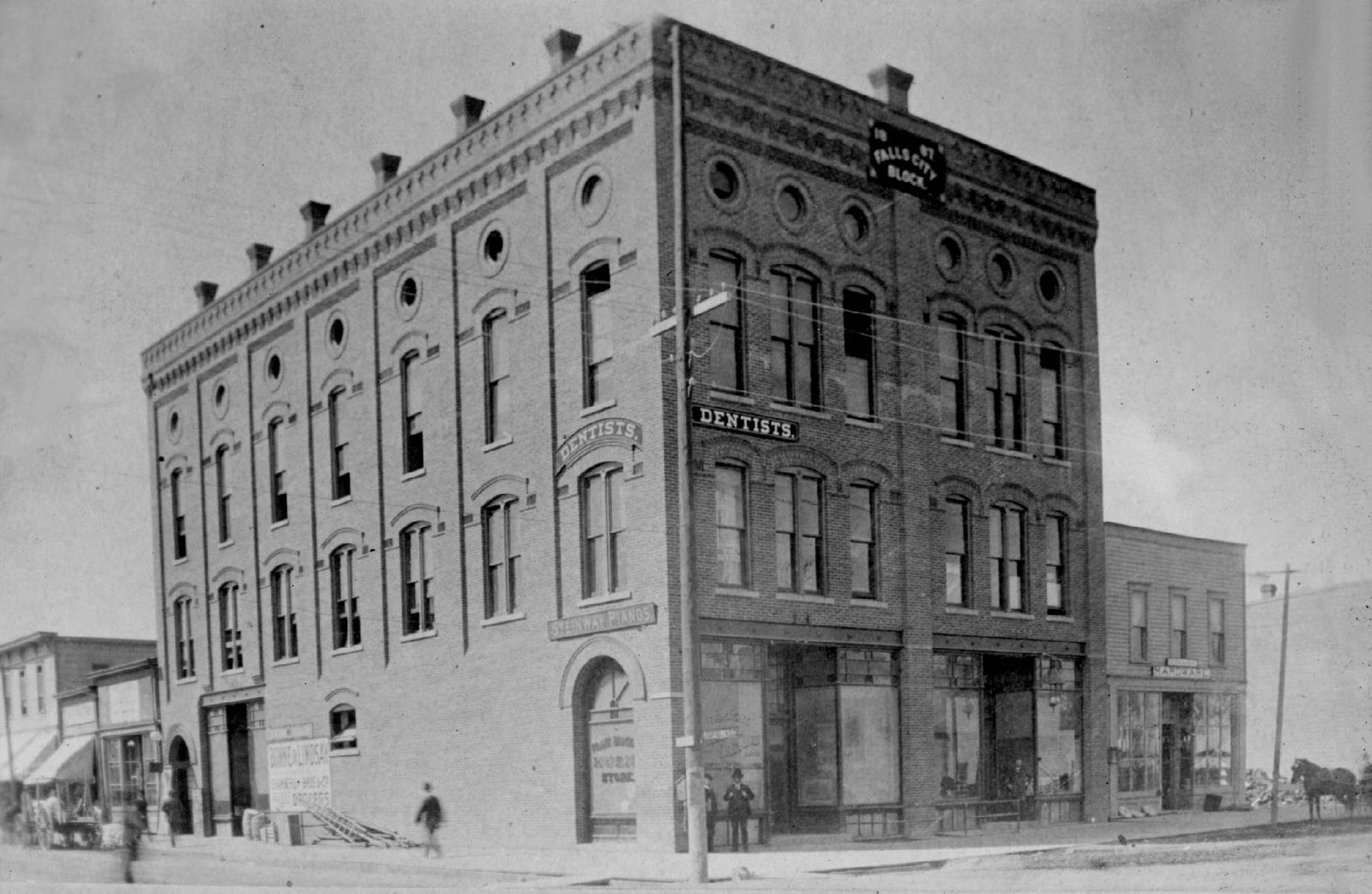
Spokane’s first “skyscraper” is shown here around the time it was built in 1887. Located on the corner of Riverside and Post, the building was then known as the tallest brick building. The first two floors were occupied by business firms, while the third floor was the home of The Falls City Opera, seating about 1250 people. The building burned down in the Fire of 1889. The Spokane Regional Business Center now occupies the site.
Photo Archive The Spokesman-Review
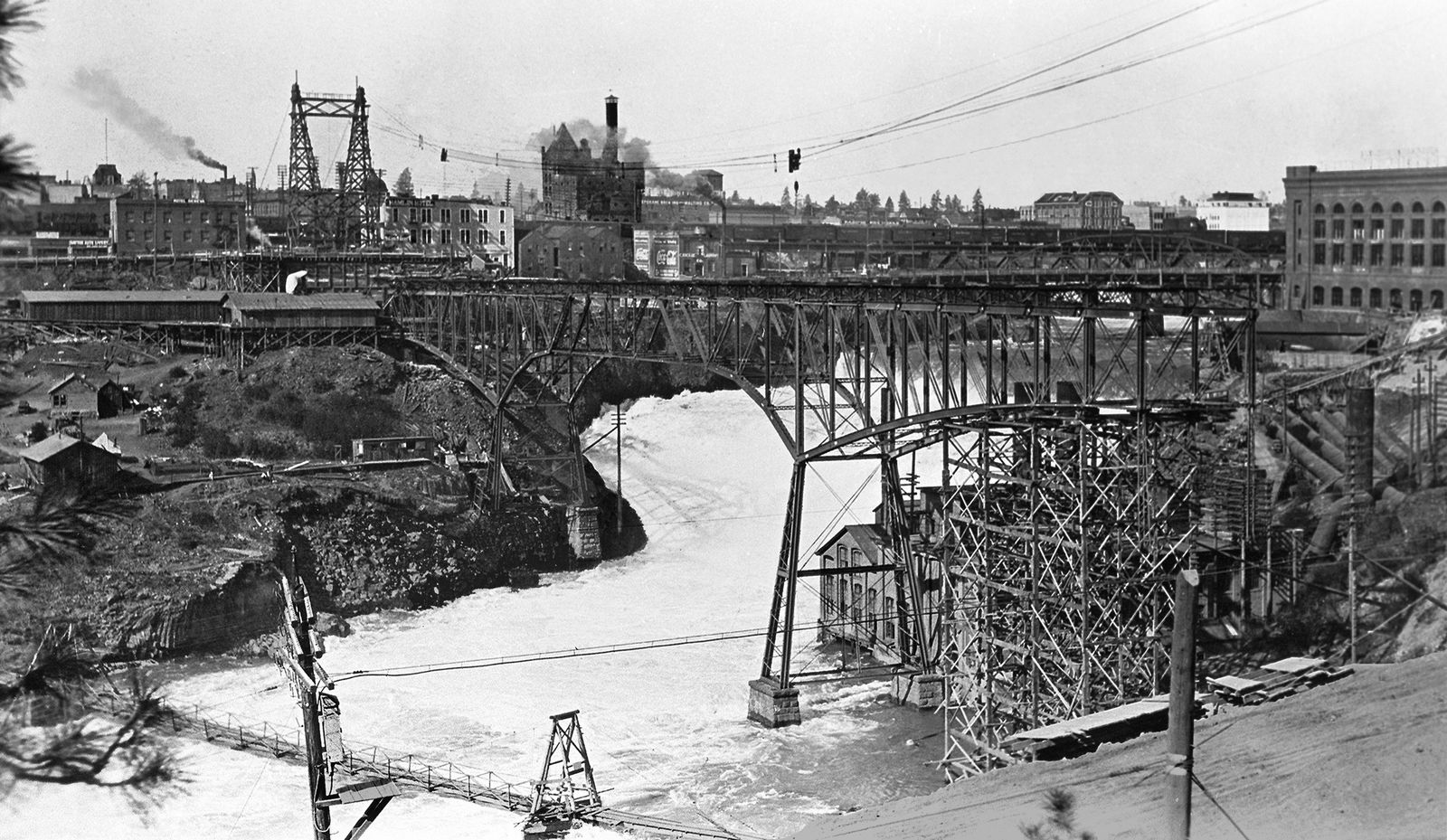
The first Monroe Street Bridge, circa 1889, was a shaky affair of wooden timbers. It was destroyed by fire soon after.
Courtesy Dorpat
This is believed to be one of the few pictures ever taken of Theatre Comique, Spokane variety theater in the 1880s and one of the gay spots in the community in 1889. The bandsmen and the occasion remain unknown. The two-story byuilding was at W 706 Main and the theater was a favorite entertainment spot until the structure was destroyed by the big fire in August 1889.
Photo Archive The Spokesman-Review
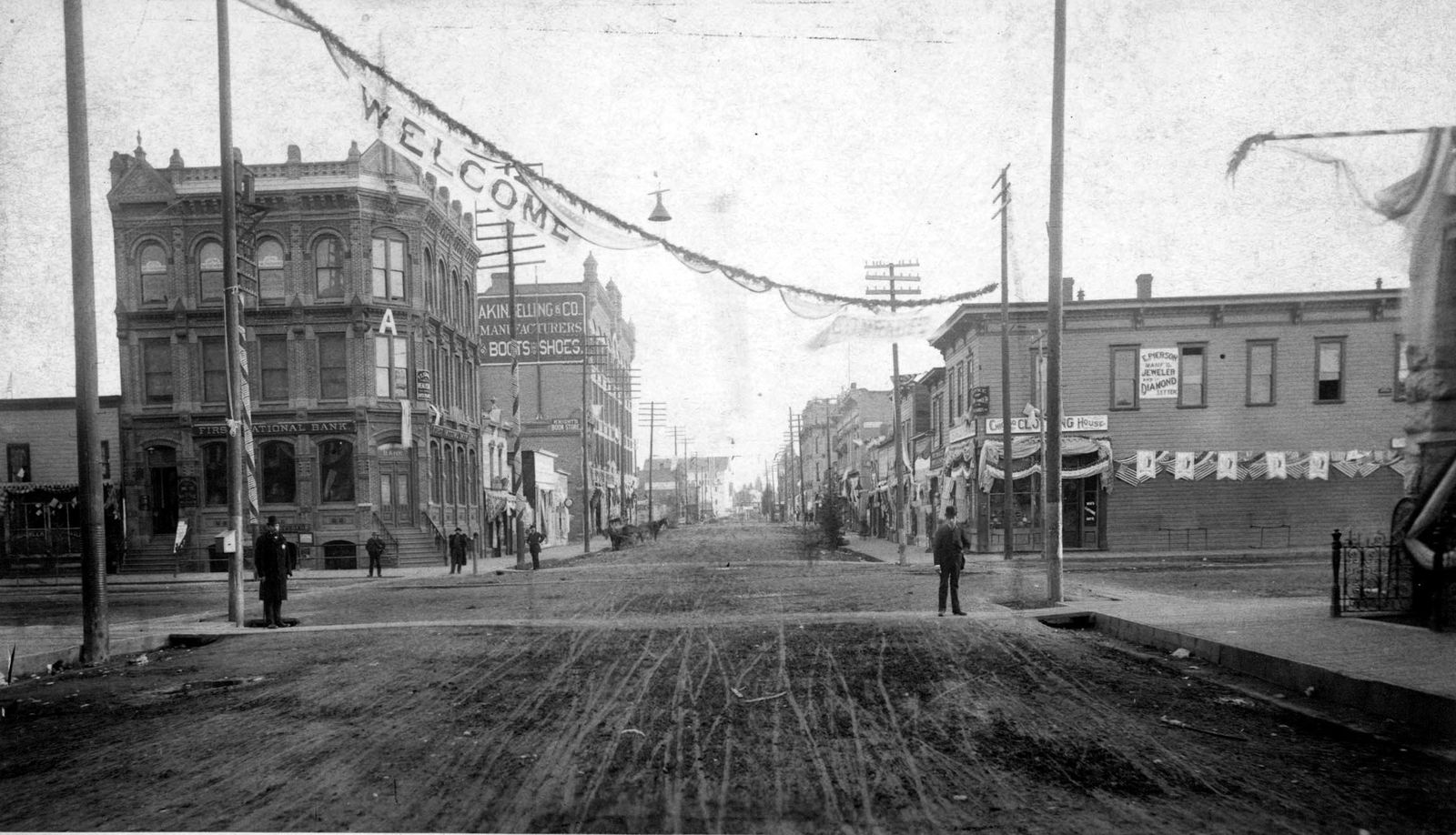
The First National Bank building is pictured on the left in May 1889 on the northwest corner of Riverside and Howard. Taken from Howard looking north, the bank was built in 1888 and then burned down in the fire of 1889. It was later rebuilt on the site, and then failed in the panic of 1893.
Photo Archive The Spokesman-Review
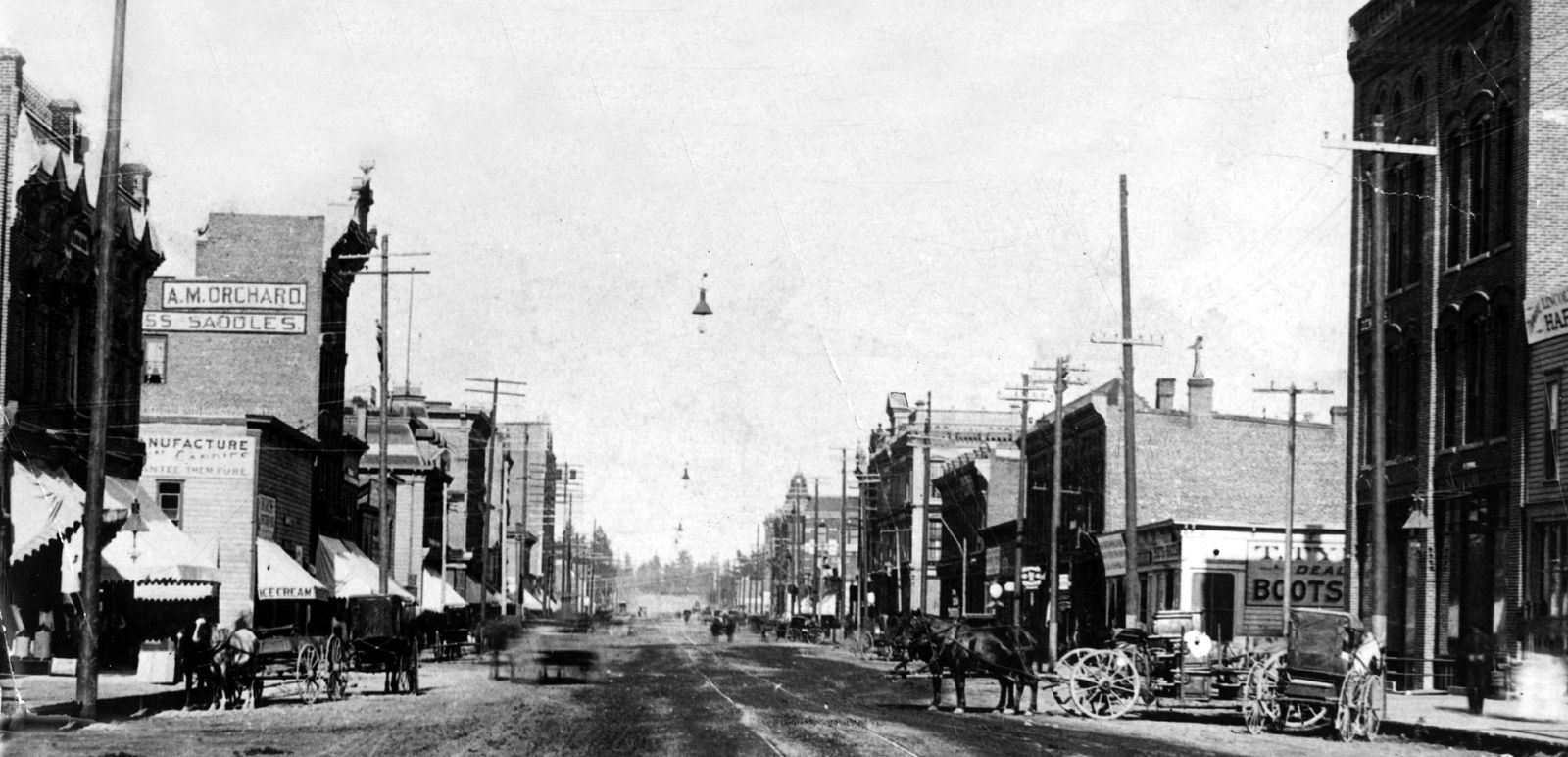
This picture of Riverside Avenue looking east from Post Street was taken just a couple of days before the ” big fire” of August 4, 1889. A 40-block area of downtown including every building in this photo was virtually wiped out.
Photo Archive The Spokesman-Review
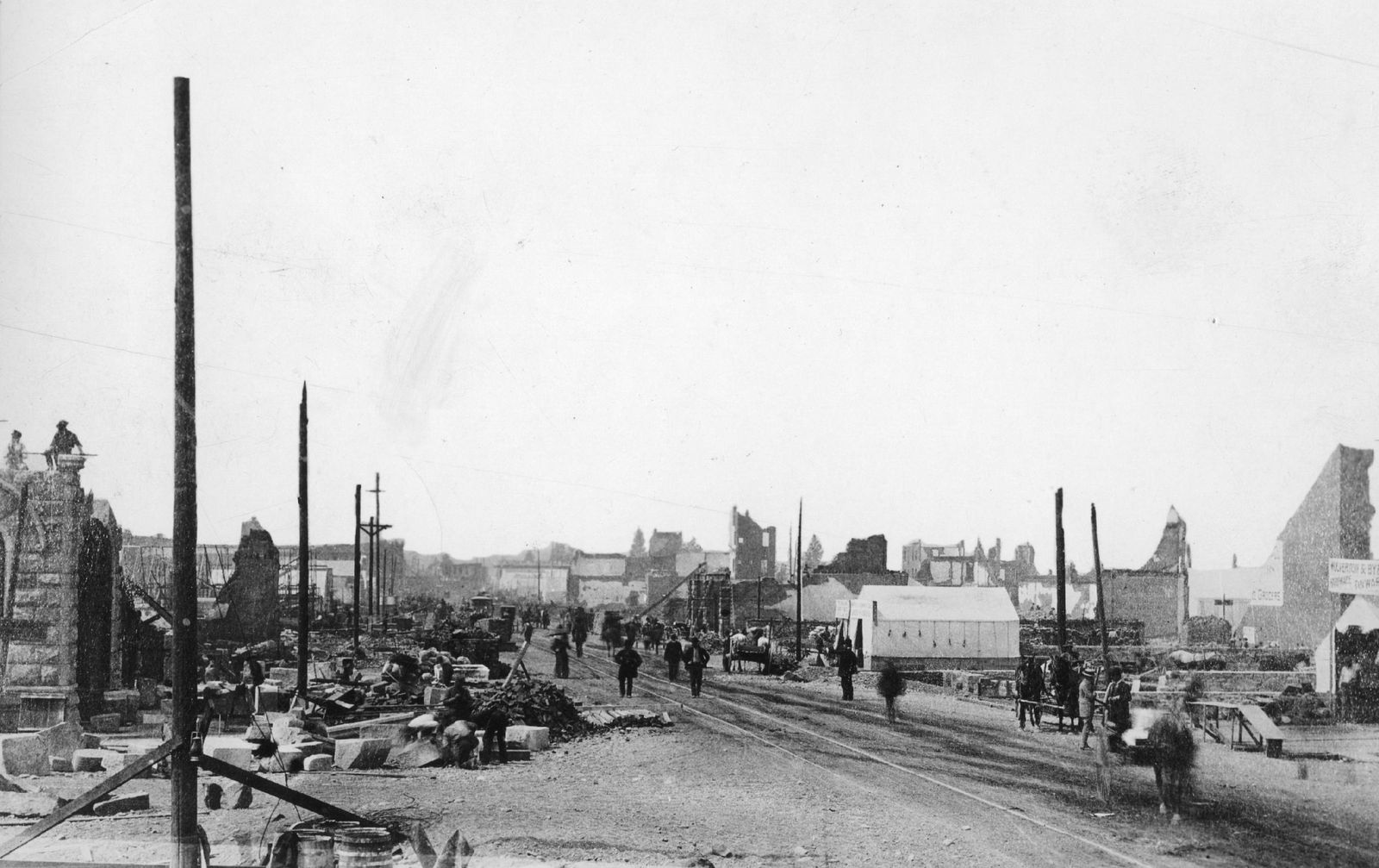
After the Fire in 1889. There’s not much left of downtown after Spokane’s great fire on Aug. 4, 1889. This view looking west from Washington Street down Riverside Avenue shows mainly charred poles and the shells of buildings.
Photo Archive The Spokesman-Review
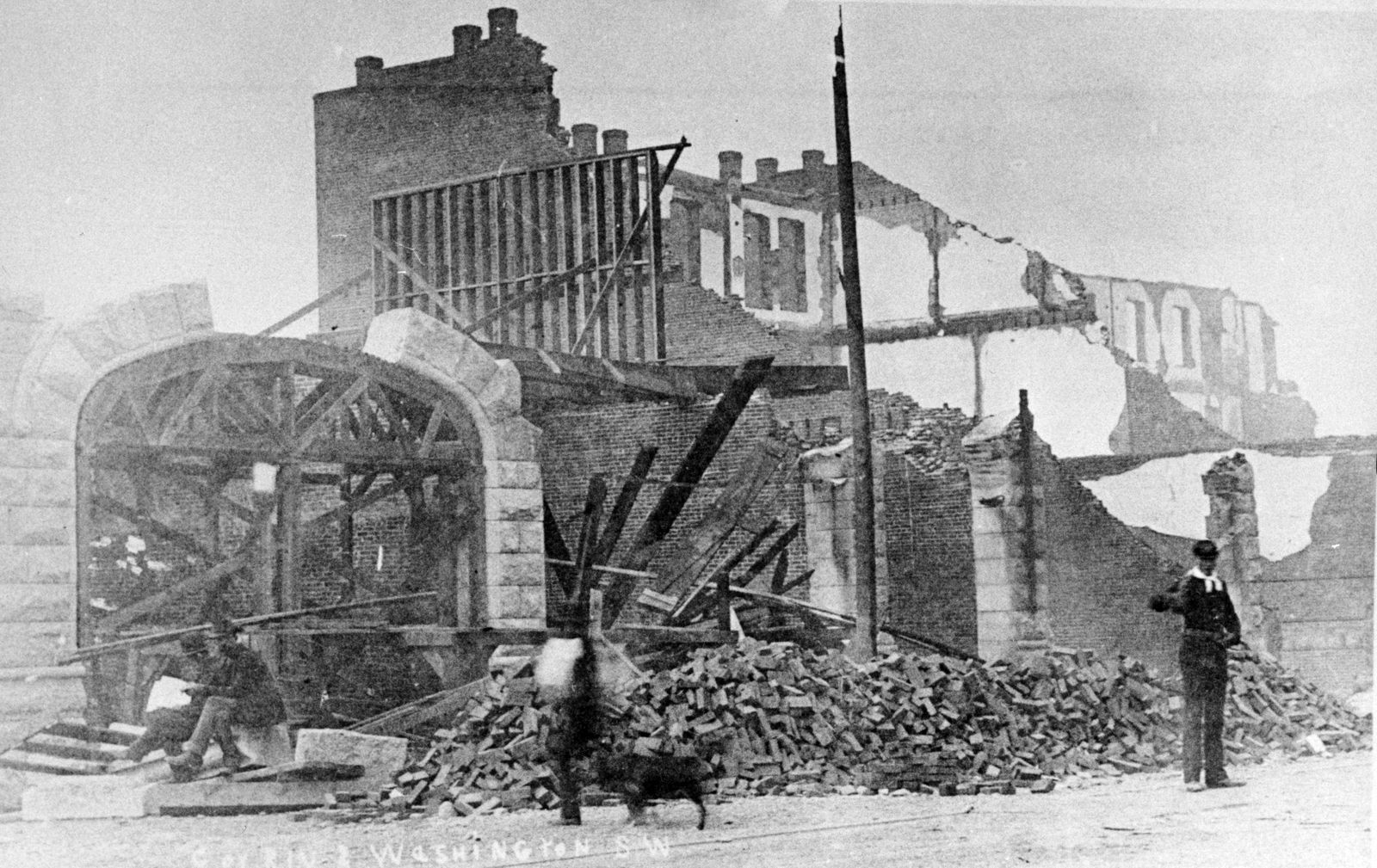
Granite Block, southwest corner Riverside and Washington, is pictured August 5 or 6, 1889. The building was under construction at the time of the fire.
Photo Archive The Spokesman-Review
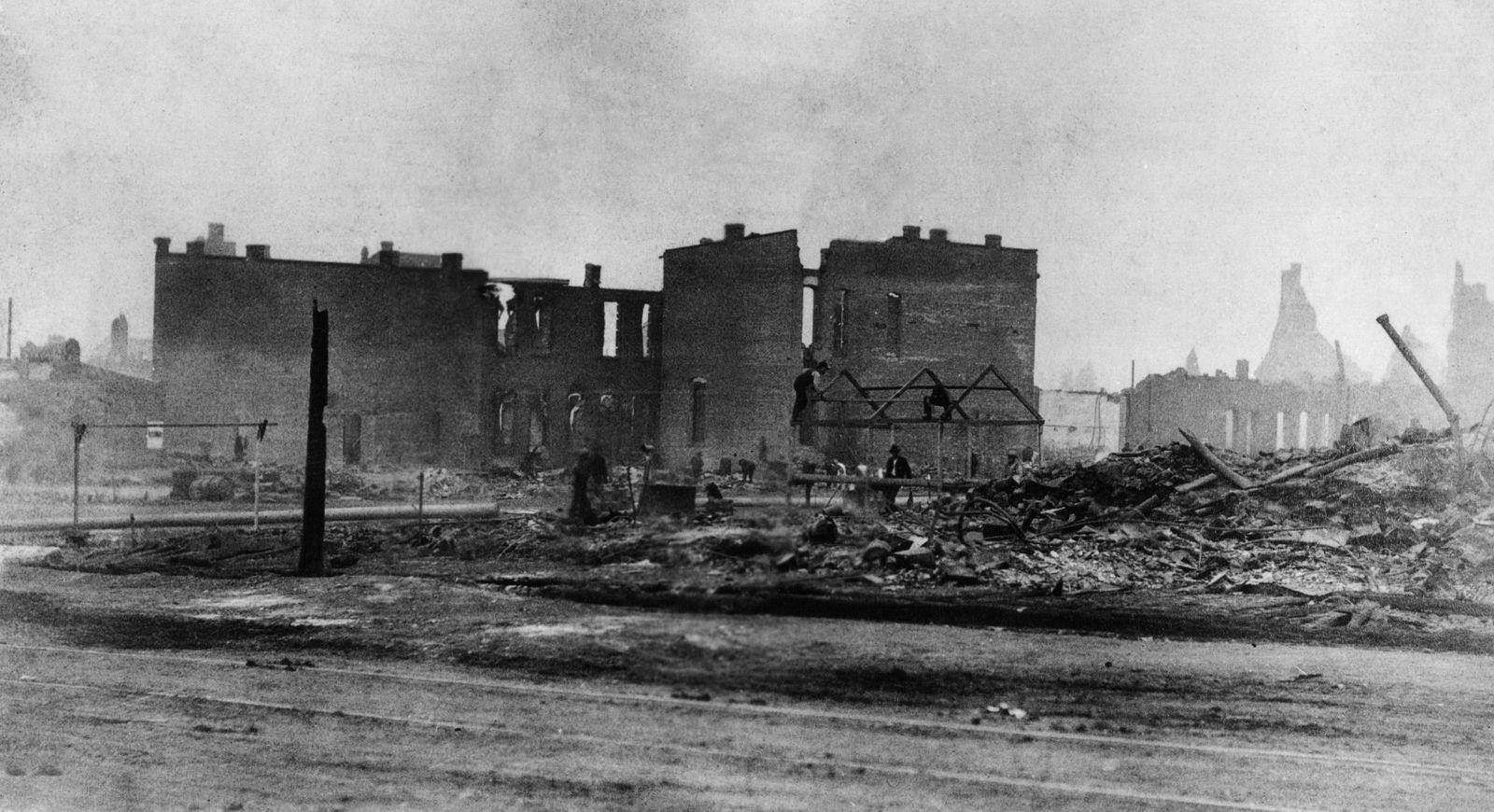
After the fire of 1889.
Photo Archive The Spokesman-Review
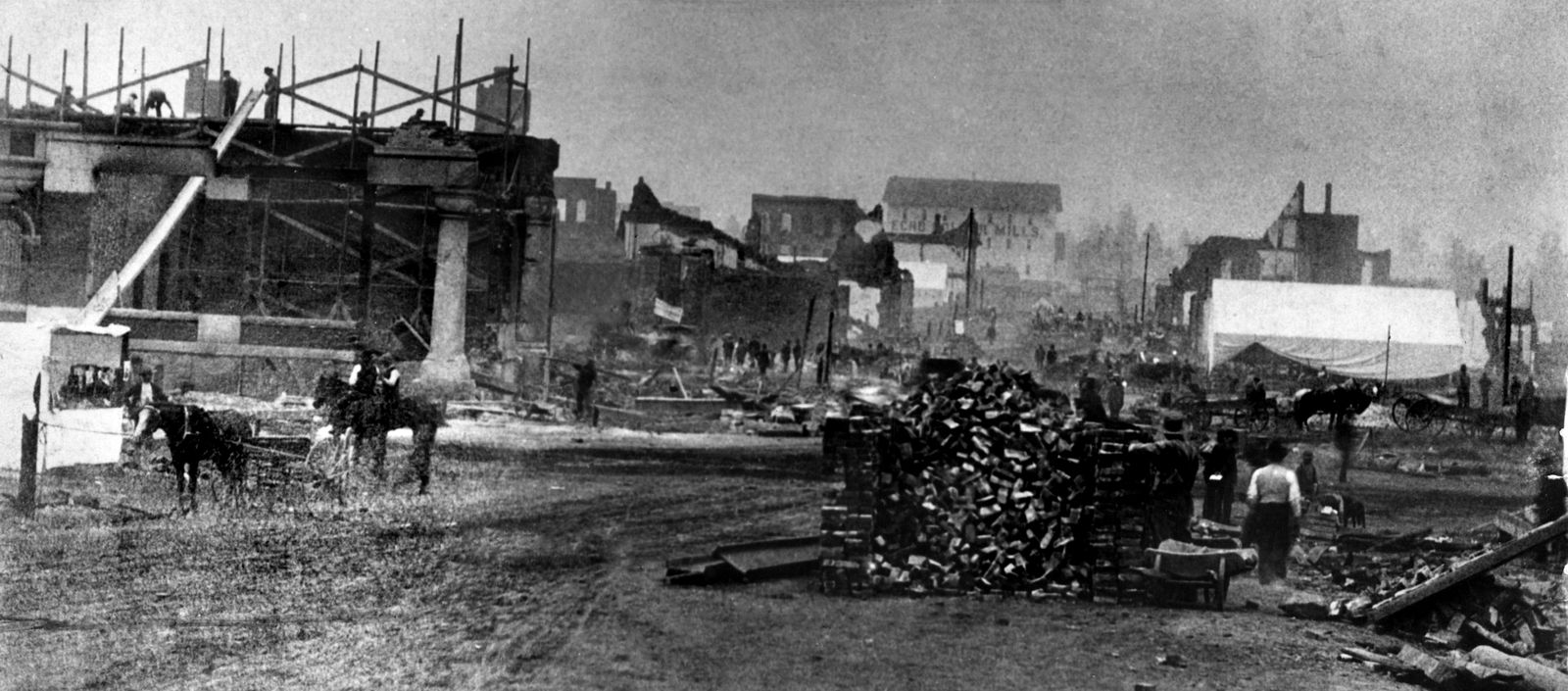
Howard Street looking North, after the fire of 1889.
Photo Archive The Spokesman-Review
After the fire of 1889.
Photo Archive The Spokesman-Review
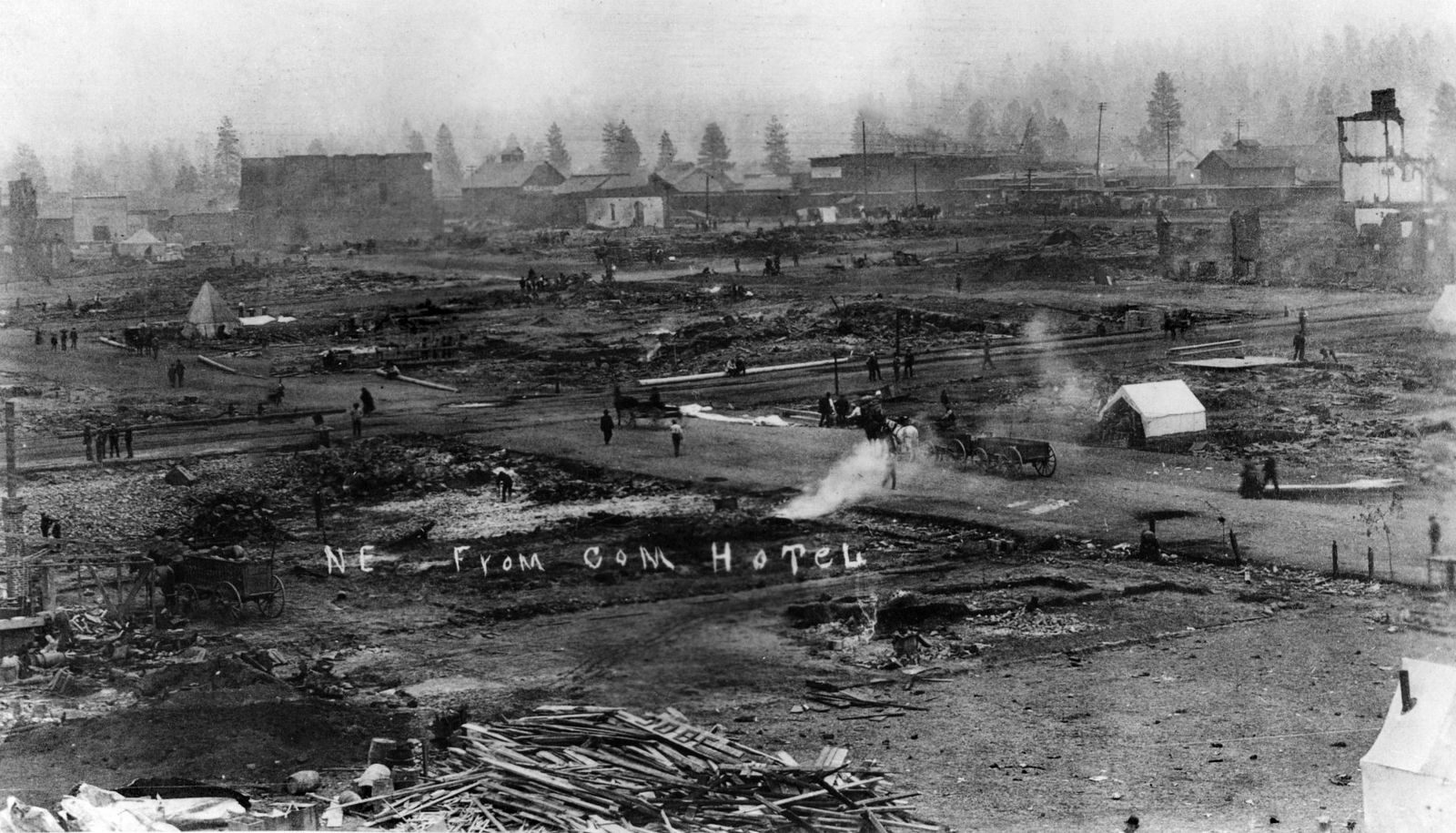
A look at the devastation after the Spokane fire of 1889.
Courtesy of the Eastern Washington State Historical Society
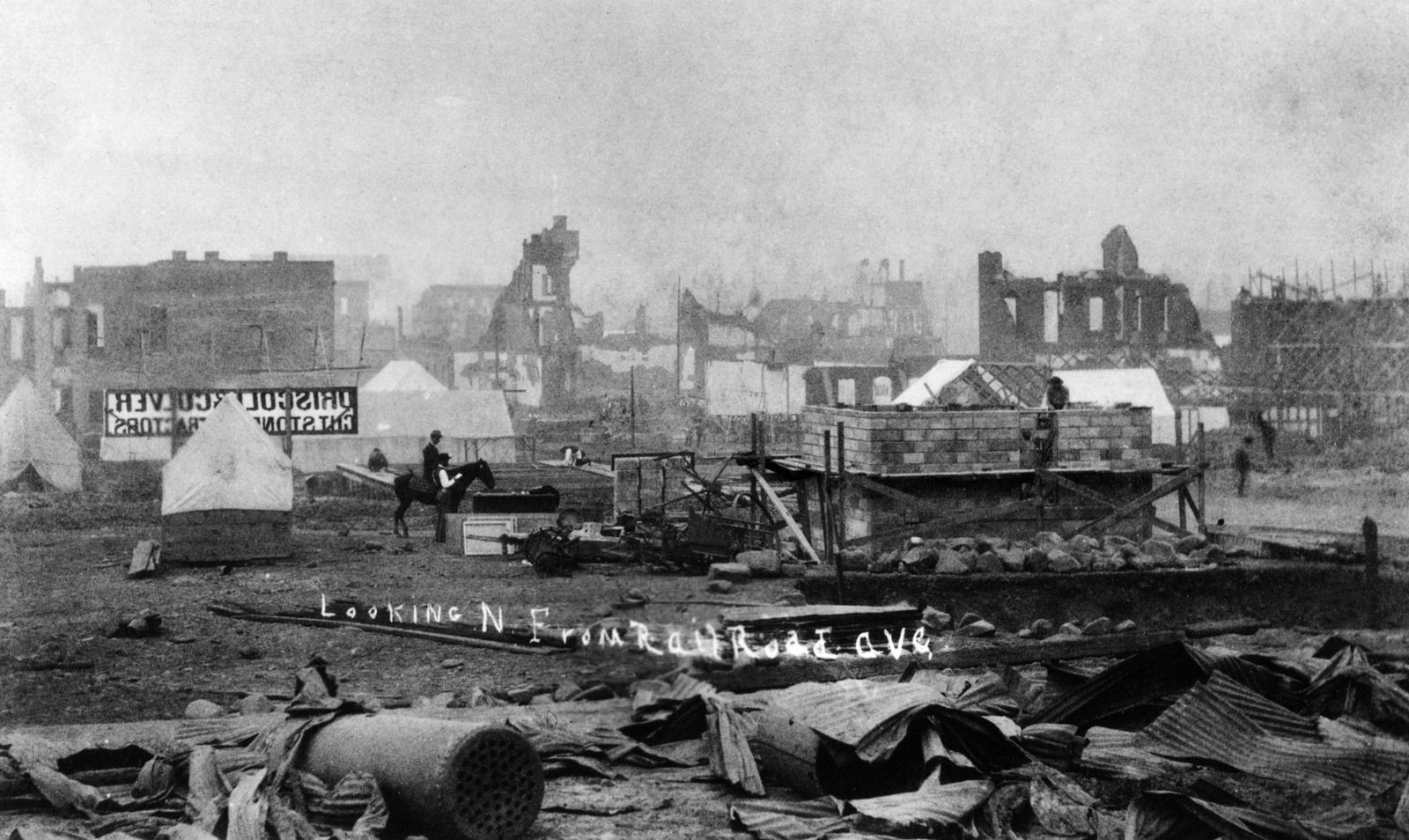
After the fire of 1889.
Courtesy of the Eastern Washington State Historical Society
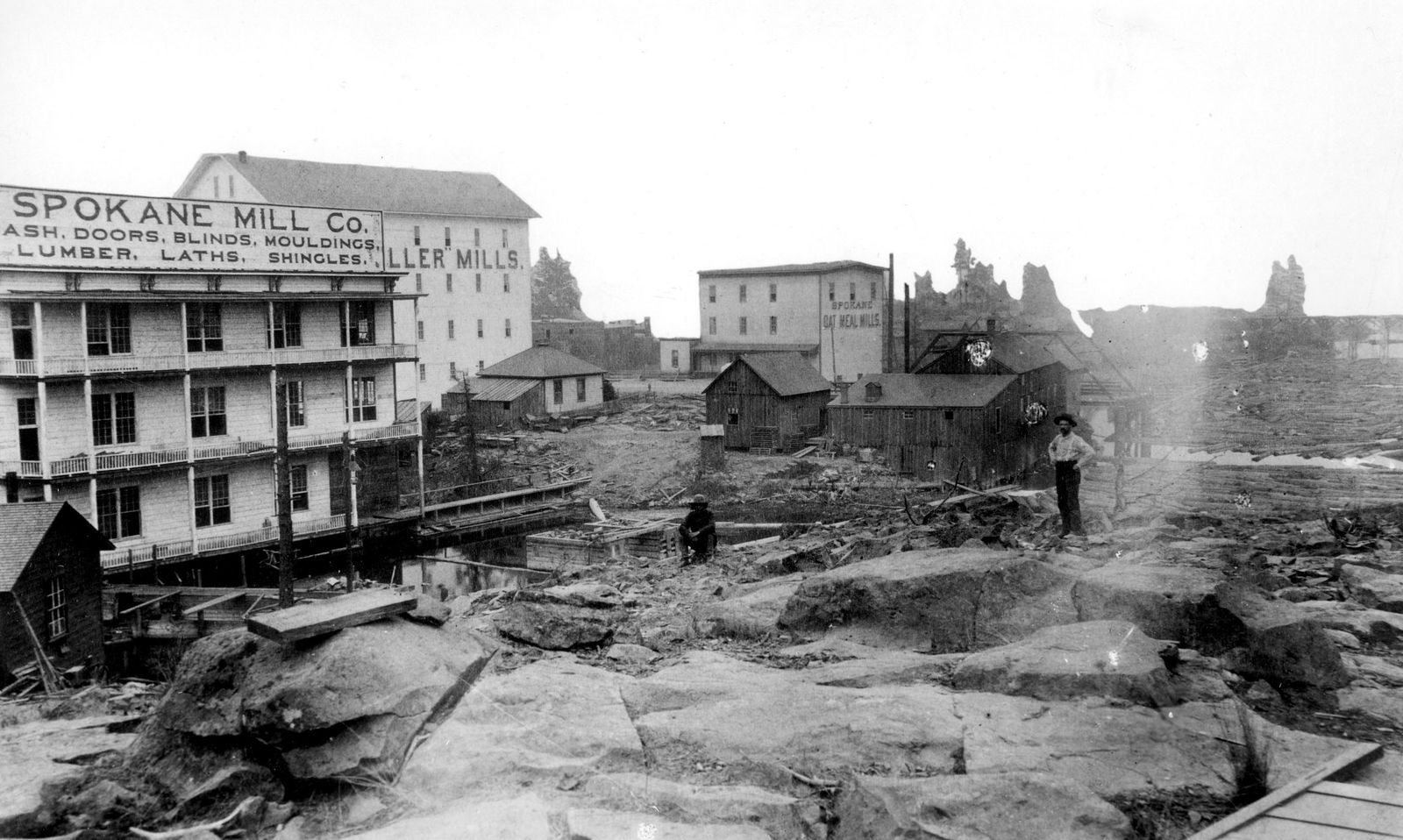
This photo was taken near Howard and Post Street after the devastating fire of 1889. Spokane Mill Company stood at the foot of Post Street. Behind it is Echo Roller Mills and Spokane Oat Meal Mills, both on Howard. The fire destroyed much of downtown Spokane.
Photo Archive The Spokesman-Review
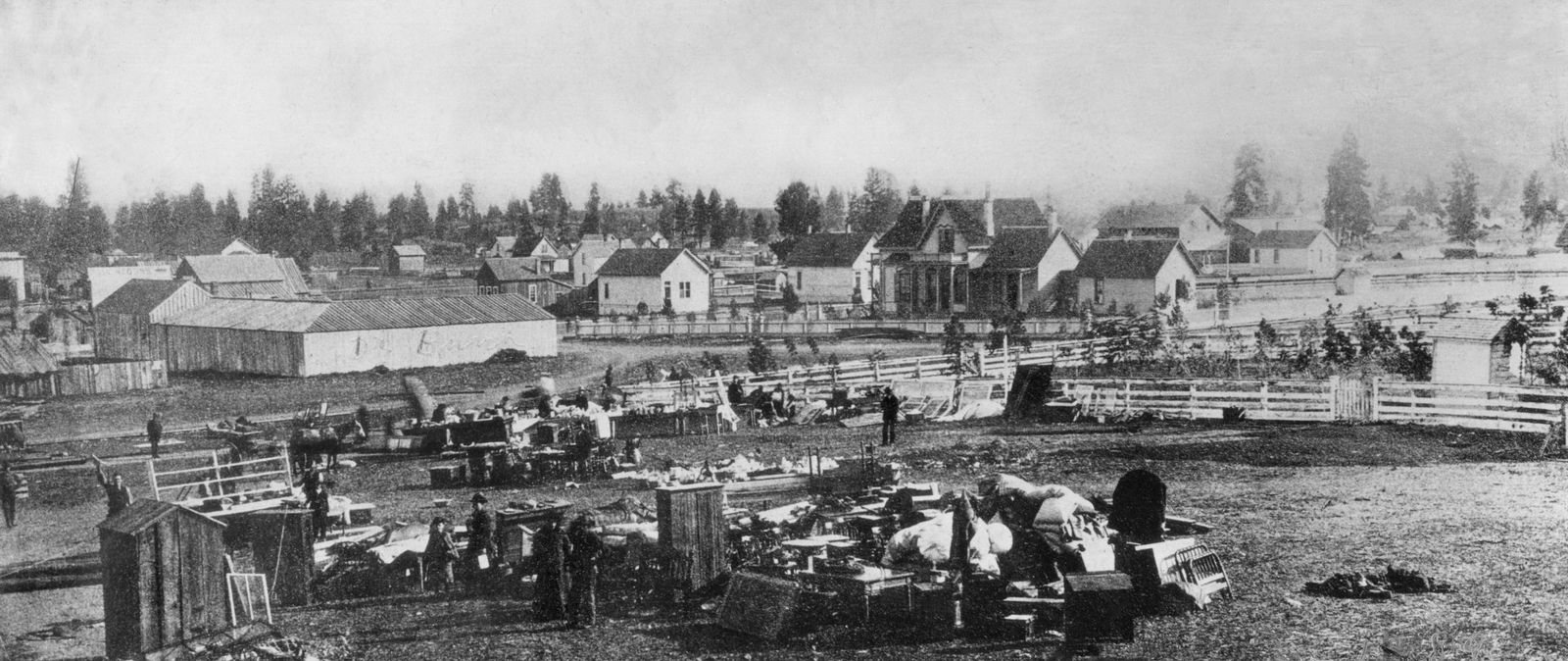
After the fire of 1889.
Photo Archive The Spokesman-Review
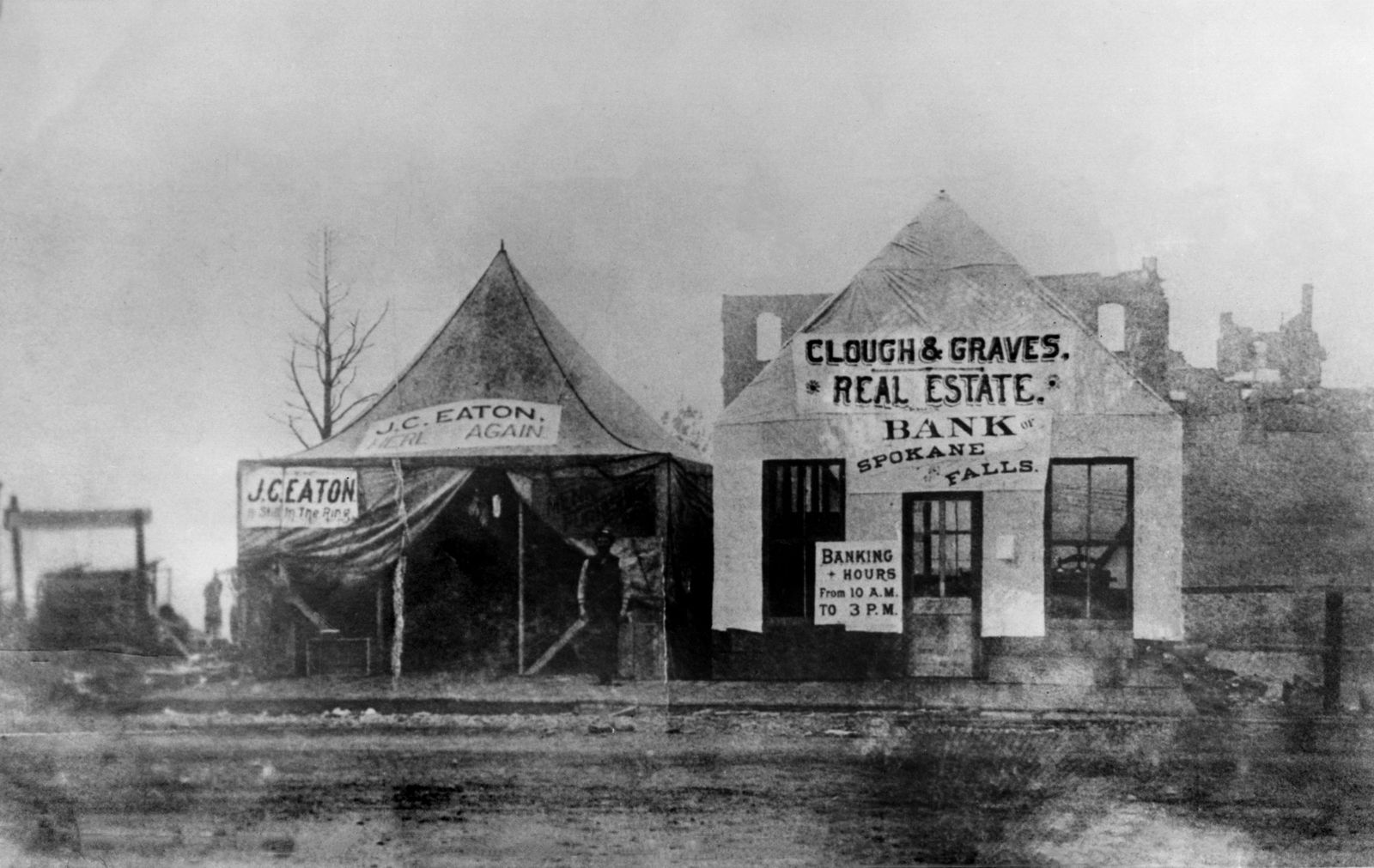
After the fire of 1889.
Photo Archive The Spokesman-Review
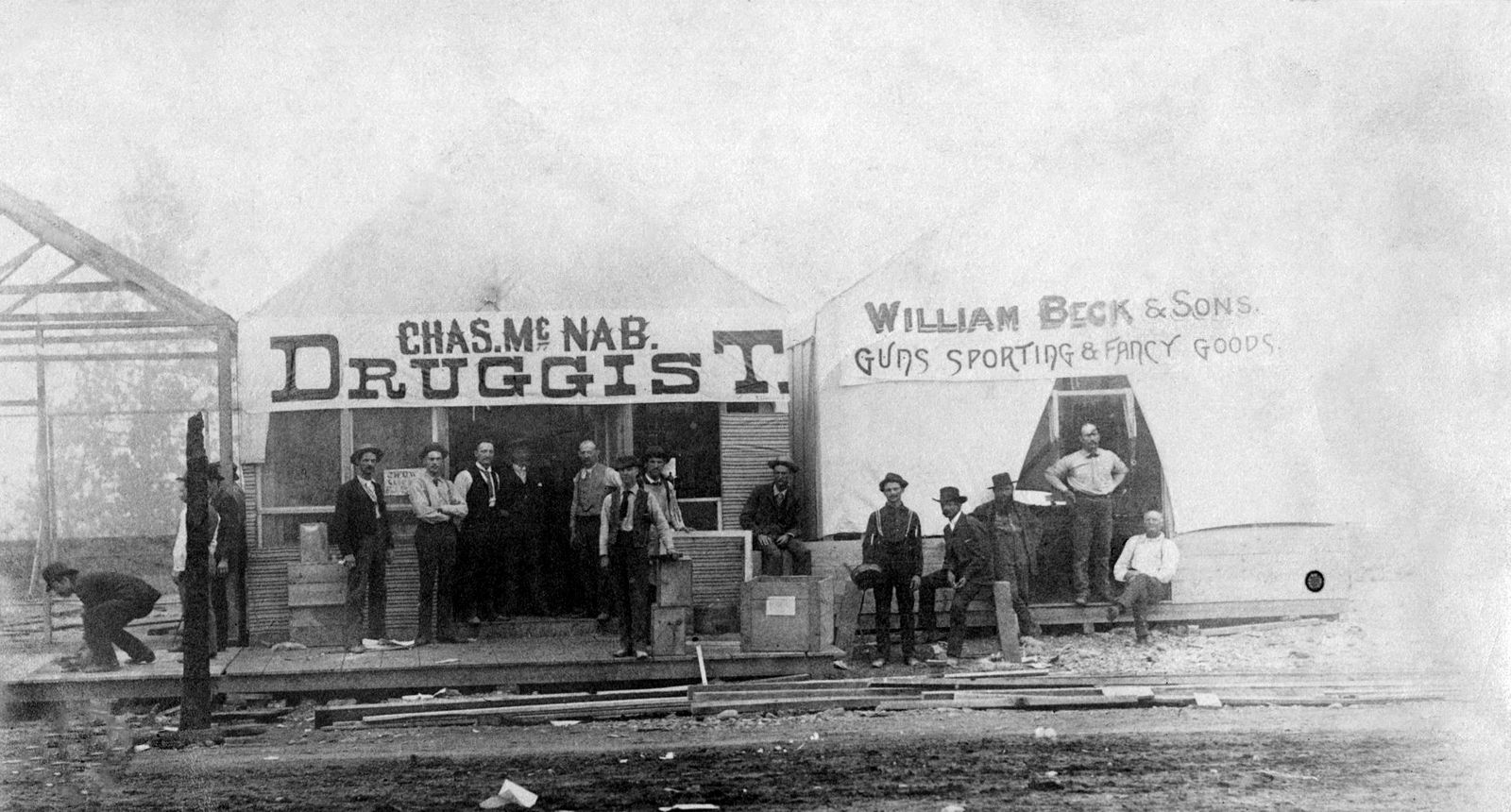
After the fire of 1889.
Photo Archive The Spokesman-Review
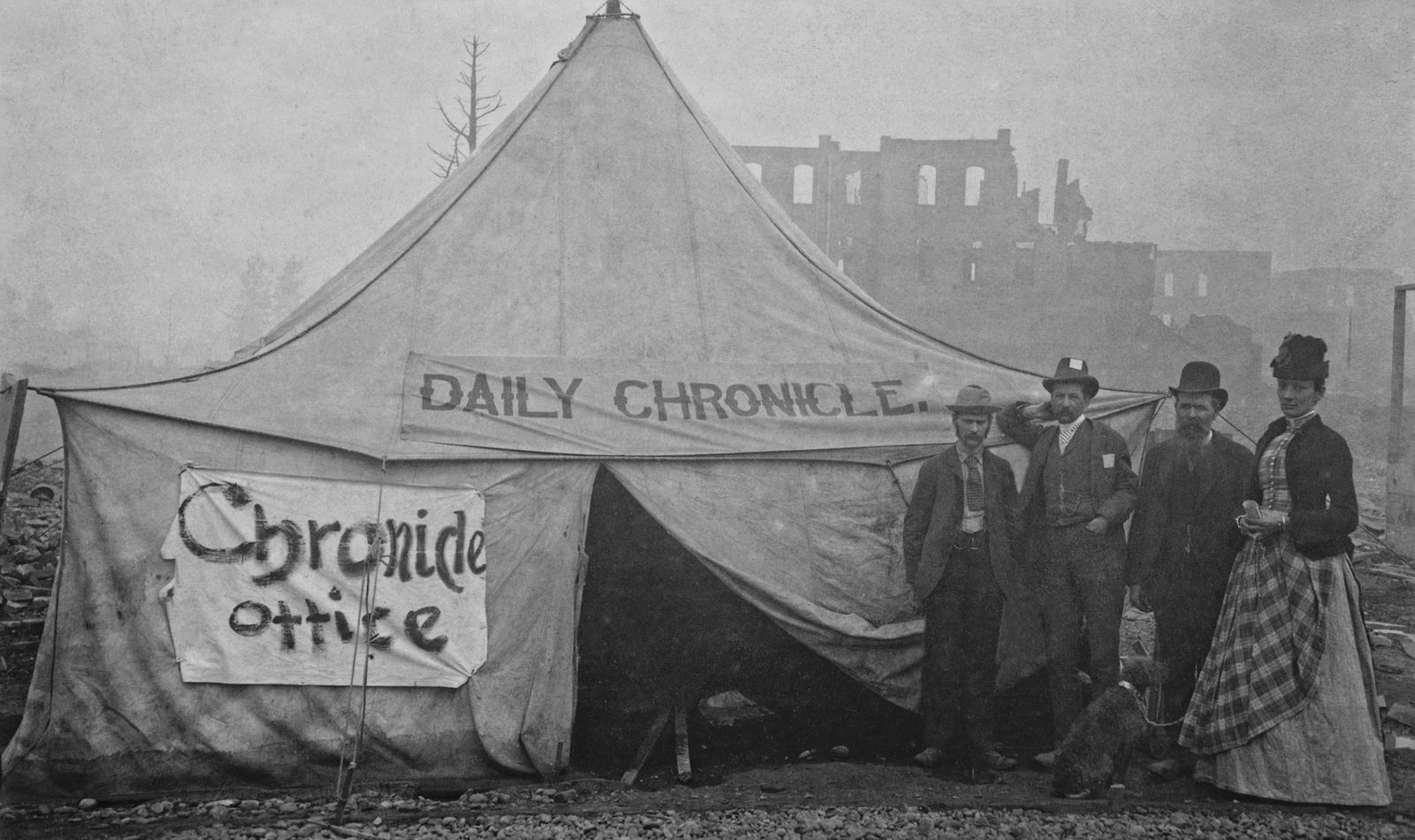
The Spokane Chronicle office is open for business after the big fire on Aug. 4, 1889.
Photo Archive The Spokesman-Review
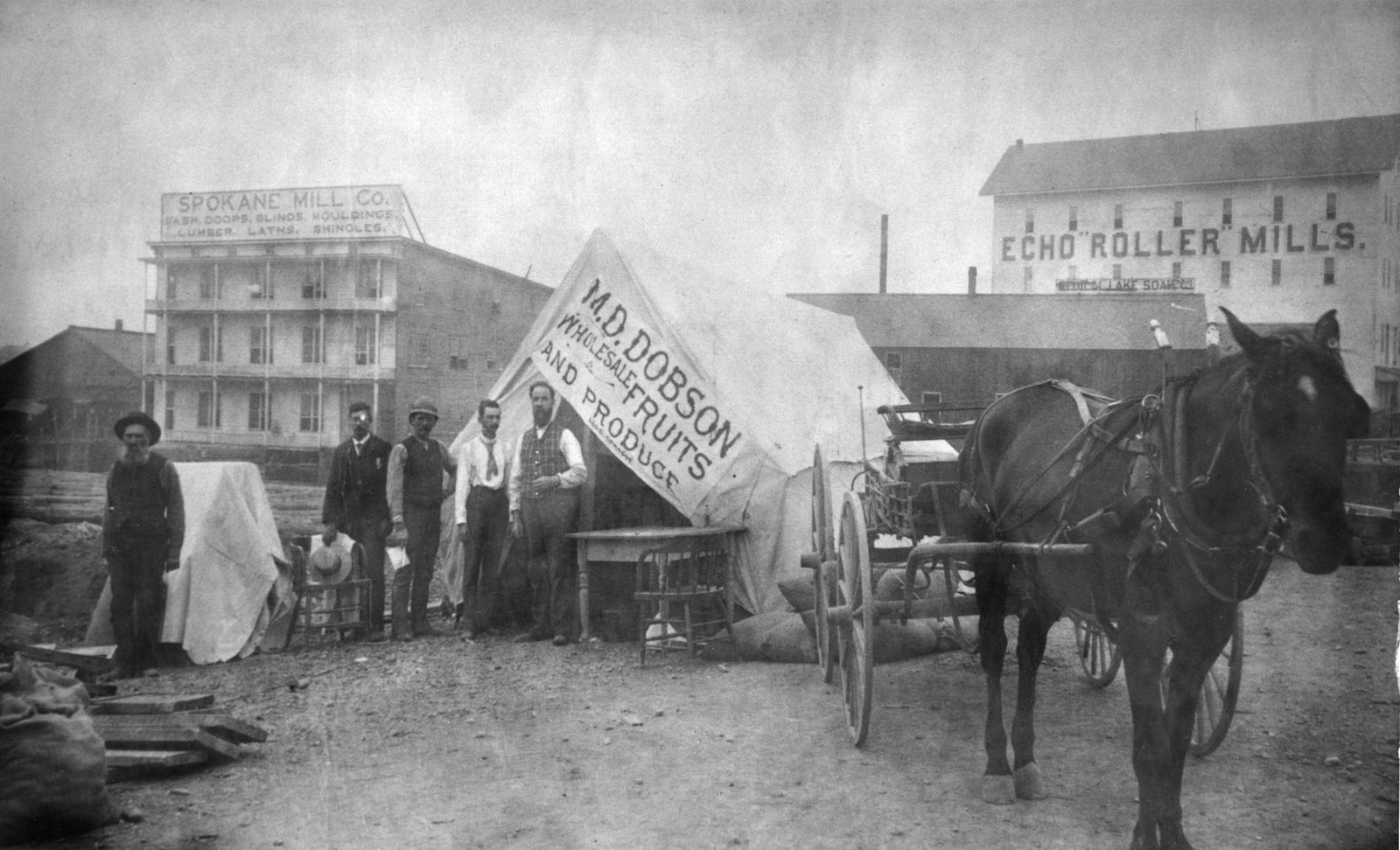
Spokane Falls after the fire of 1889.
Photo Archive The Spokesman-Review
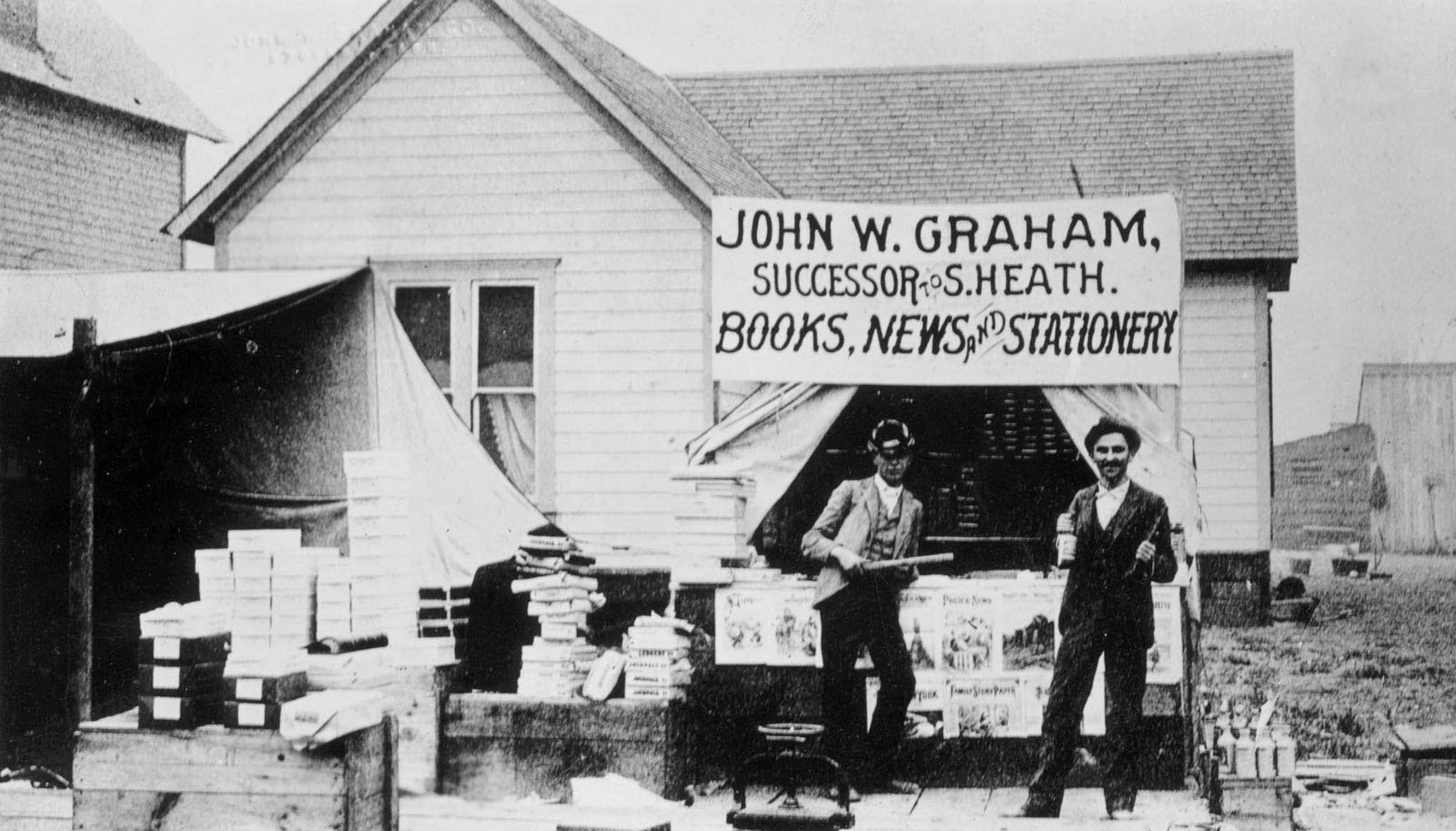
John W. Graham and Co. opened for business in a 6x8 foot tent the day after the Great Fire of 1889 which practically wiped out the town. Graham himself is at right. For most of the century, the store occupied a six-story building that extended a full block form First to Sprague between Wall and Post. Their motto was: “If it’s made of paper, we have it.” In addition to paper products, they sold everything from art supplies to cameras, sporting goods to furniture. John W. Graham and Co. later moved to the Paulsen Building and then to Northtown Mall.
Photo Archive The Spokesman-Review
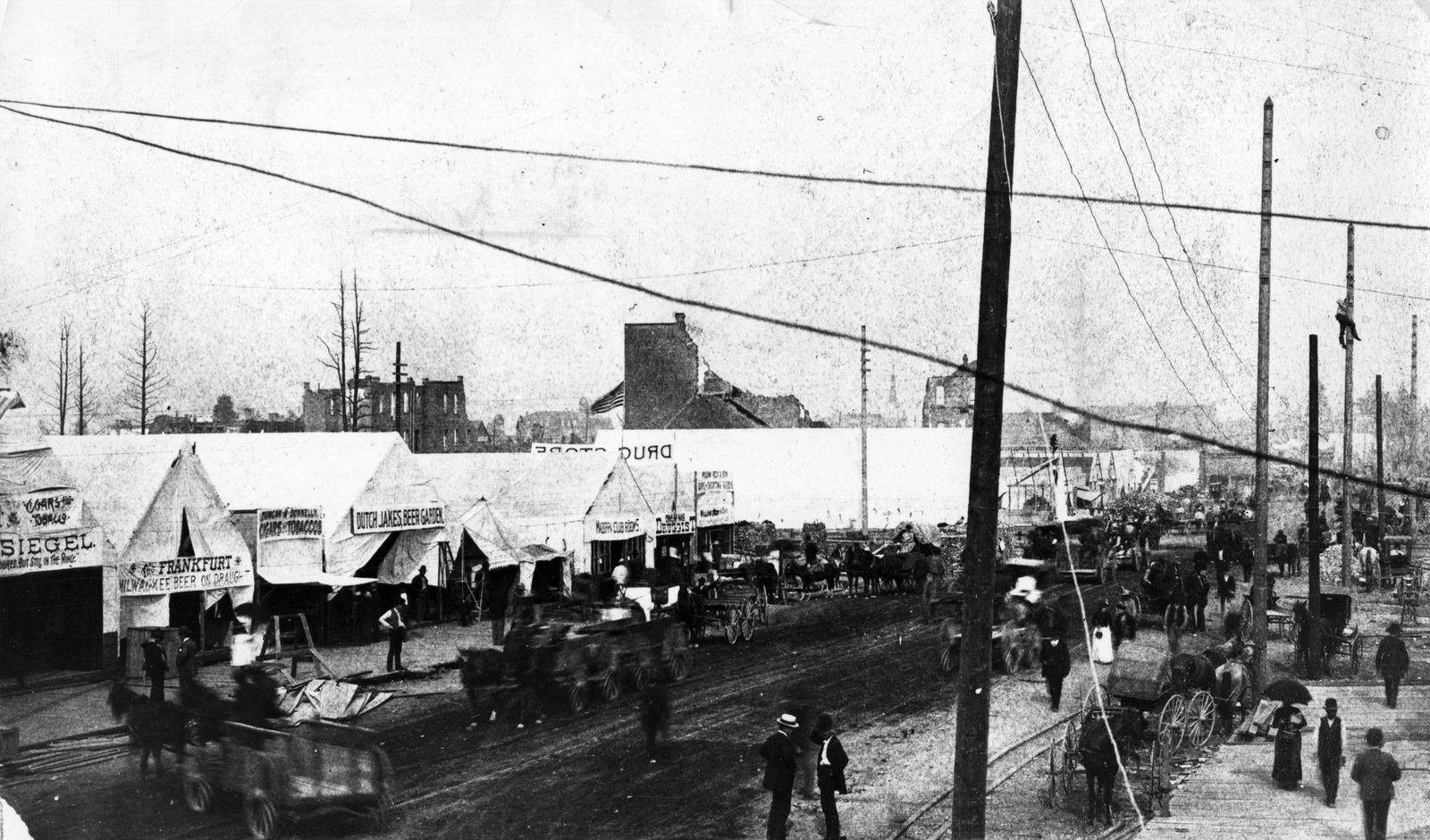
Riverside Ave., between Lincoln and Post, looking northeast after the 1889 fire.
Photo Archive The Spokesman-Review
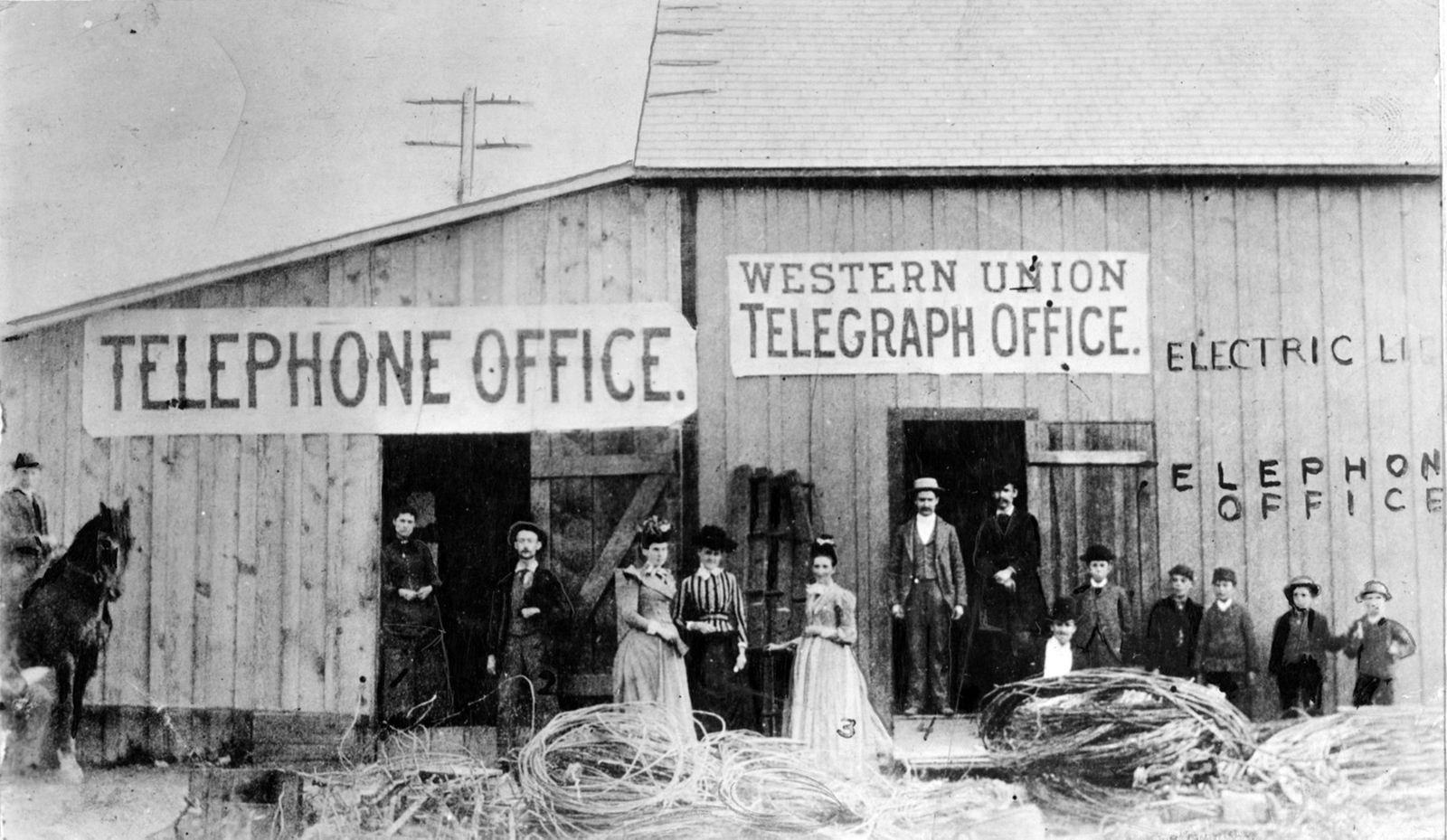
This is the temporary office that Washington Water Power, Western Union and Inland Telephone and Telegraph established following the Great Fire of 1889 in a barn at the rear of F. Rockwood Moore’s home between Sprague and First Ave. in Spokane, Wash.
Photo Archive The Spokesman-Review
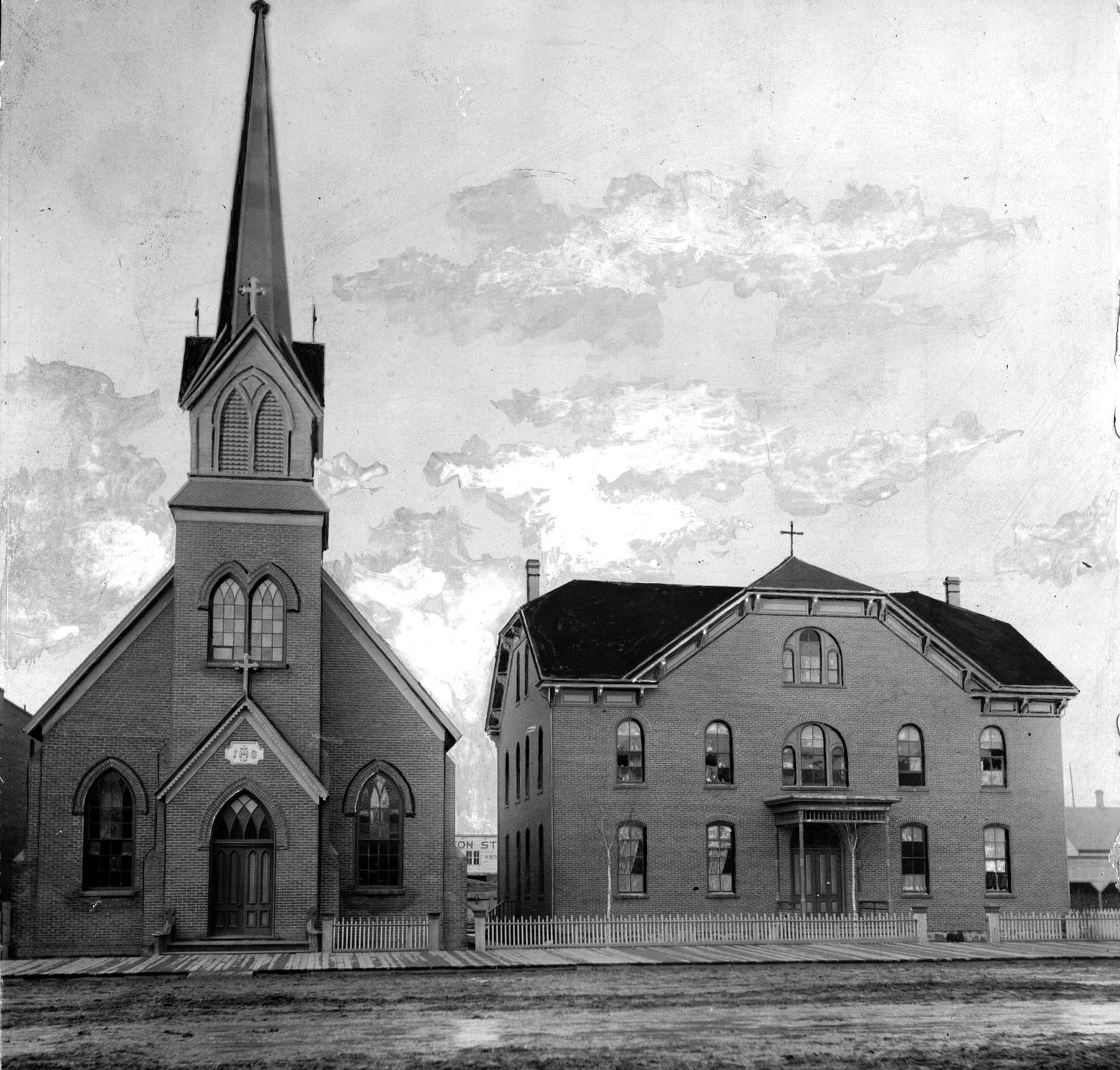
Our Lady of Lourdes Catholic Church is pictured here in 1889 on the north side of Main, near Bernard. The church and adjacent school, built just a few years earlier, were two of the few buildings spared in the fire of 1889. After the current cathedral was built in 1908, these buildings were sold and eventually torn down in 1972.
Photo Archive The Spokesman-Review
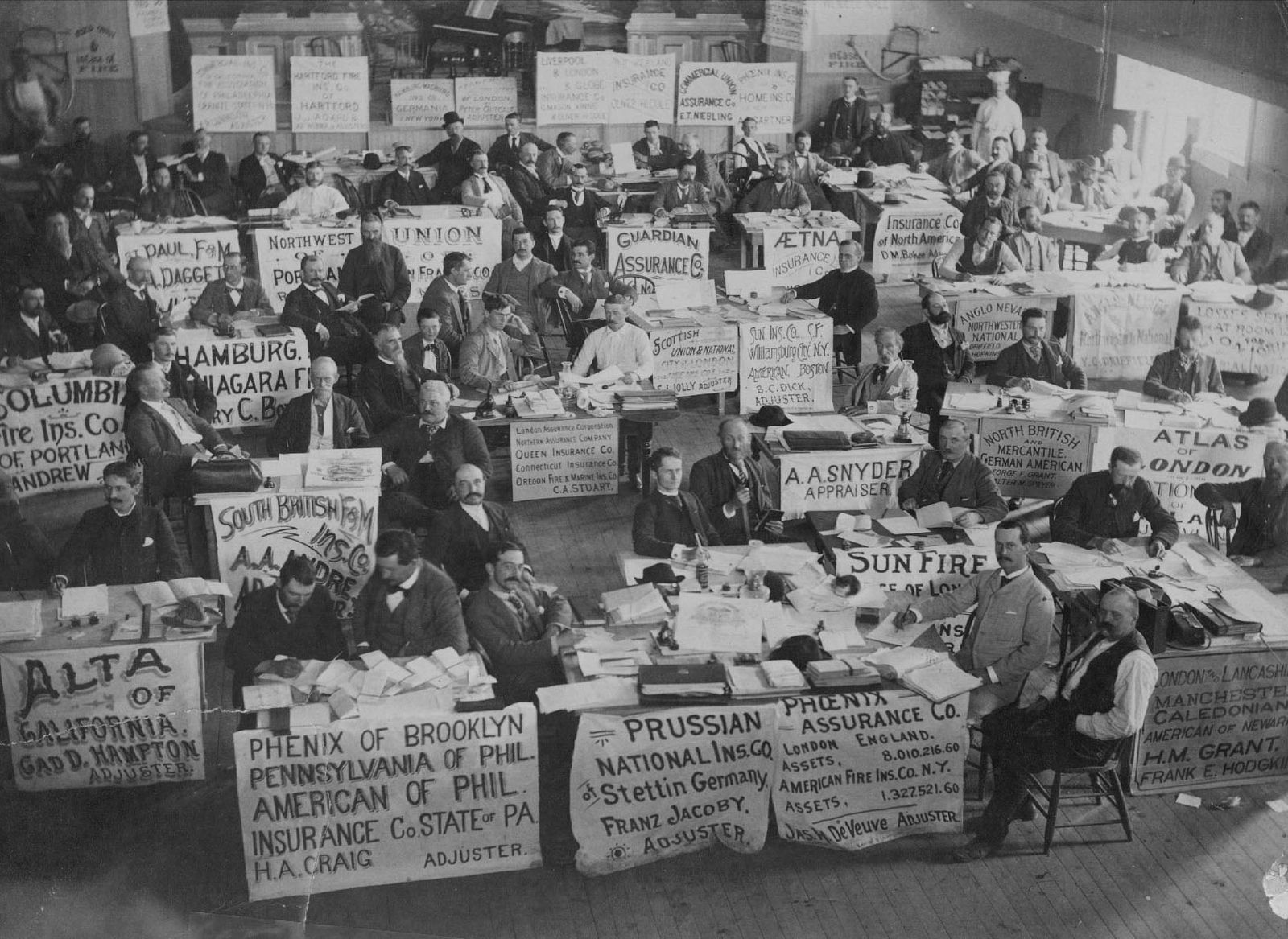
This is a picture of the fire insurance adjusters that came to Spokane to settle claims for the fire of 1889 that burned most of the city. Joseph Pellanda, far right in the back, pictured in chef’s clothing, owned a restaurant in Spokane at the time of the convention, and cooked for the underwriters.
Courtesy William Pellanda, grandson of Joseph Pellanda
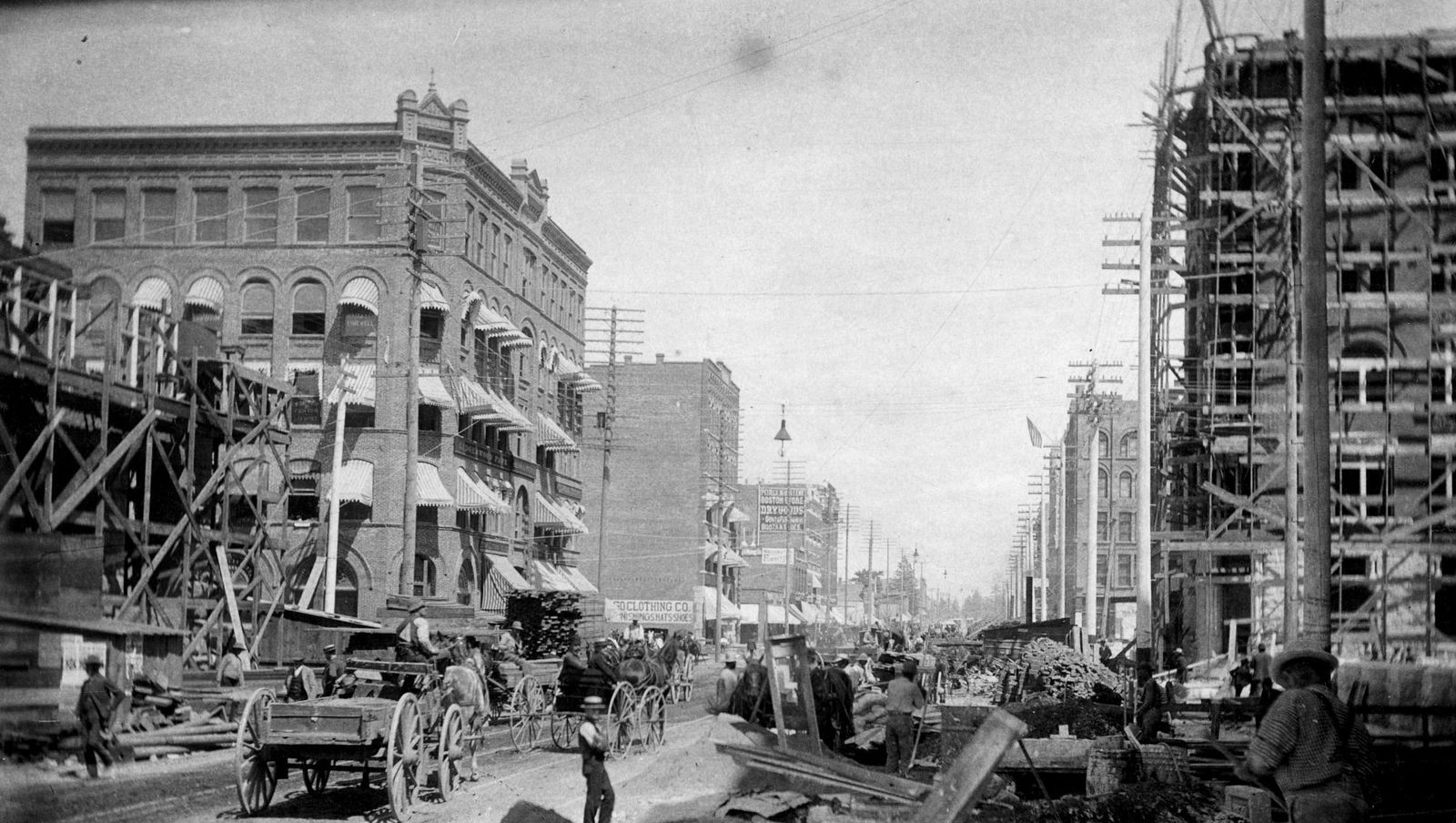
Spokane Falls businesses made great progress in rebuilding the downtown area just a year after the devastating fire of 1889. The Ziegler Building, pictured on the left with awnings, was the tallest high-rise built immediately following the fire. It stood on the northeast corner of Riverside and Howard.
Photo Archive The Spokesman-Review
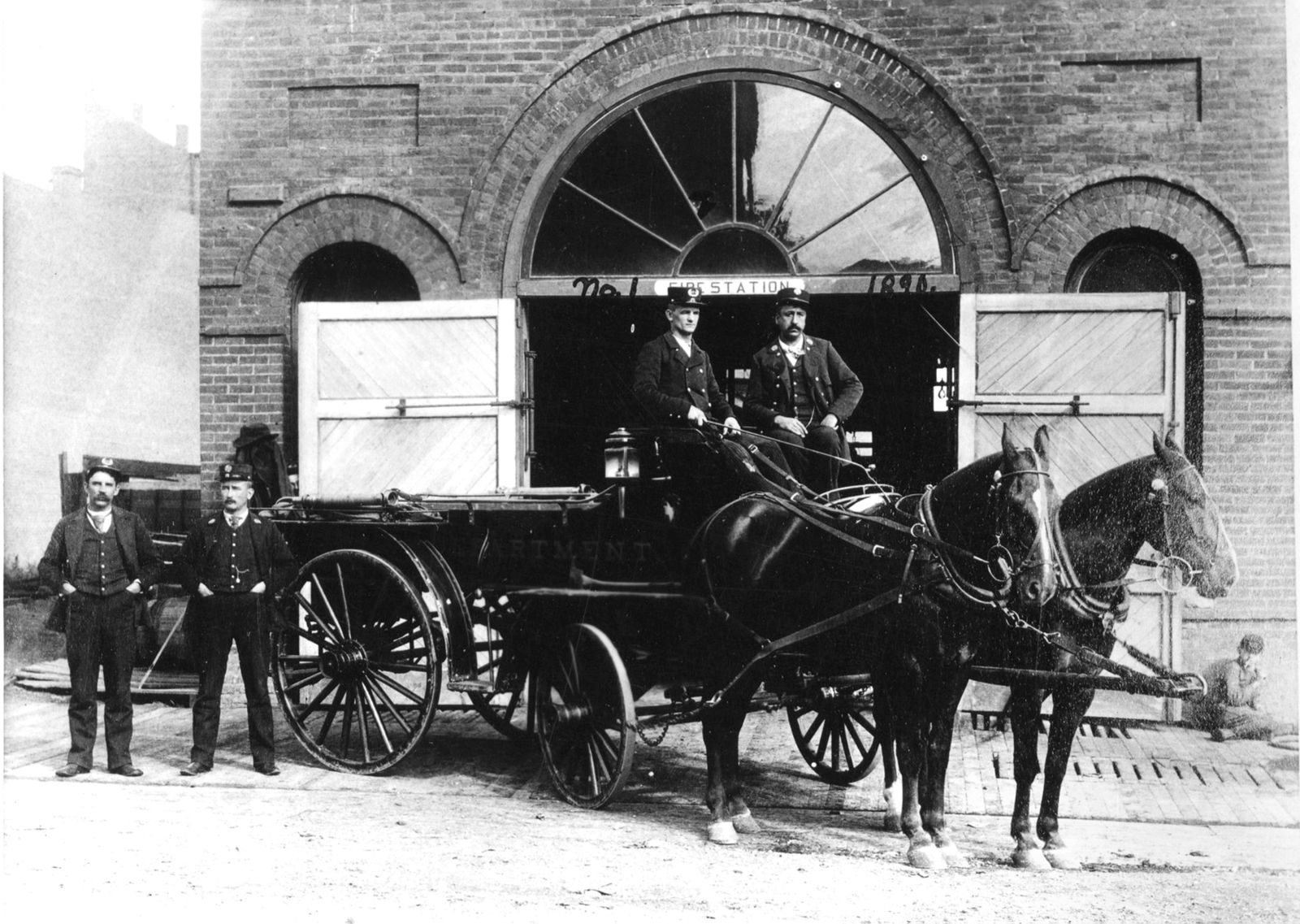
Fire Station No. 1 in 1890. On the seat of the hose wagon is driver N.C. Gillette and Captain Frank Winsor. Standing at the rear of the wagon are L.J. Meeks, John Lynch.
Photo Archive The Spokesman-Review

Streetcars line up near the intersection of Trent and Howard, waiting to take passengers to Natatorium Park as horse drawn wagons pass by early in the century.
Photo Archive The Spokesman-Review
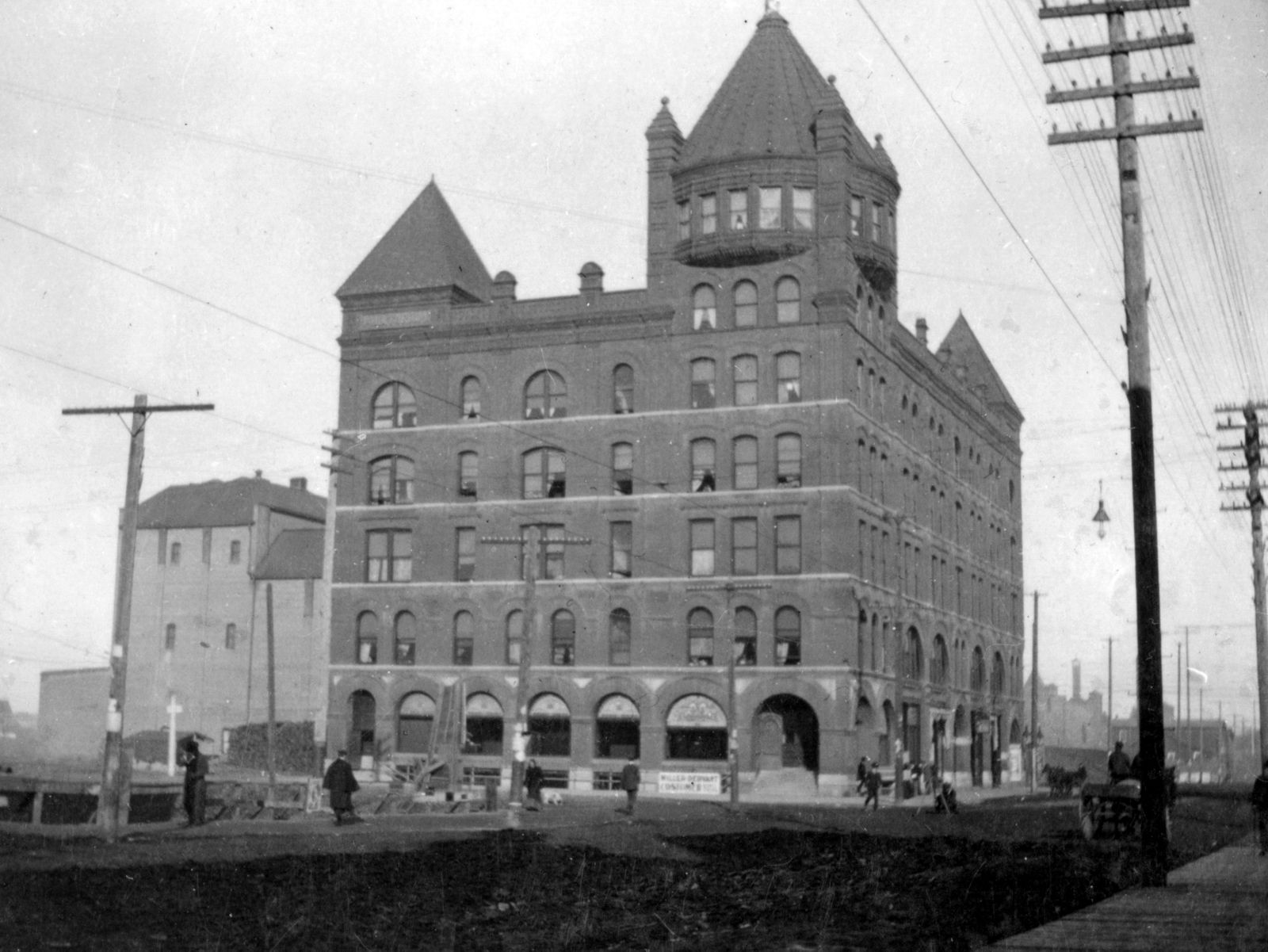
This undated photo shows the Auditorium Theater Building around 1900. Construction started just before the 1889 fire and, surviving that, was completed in 1890. It was torn down in 1934.
Courtesy of Spokane Public Library
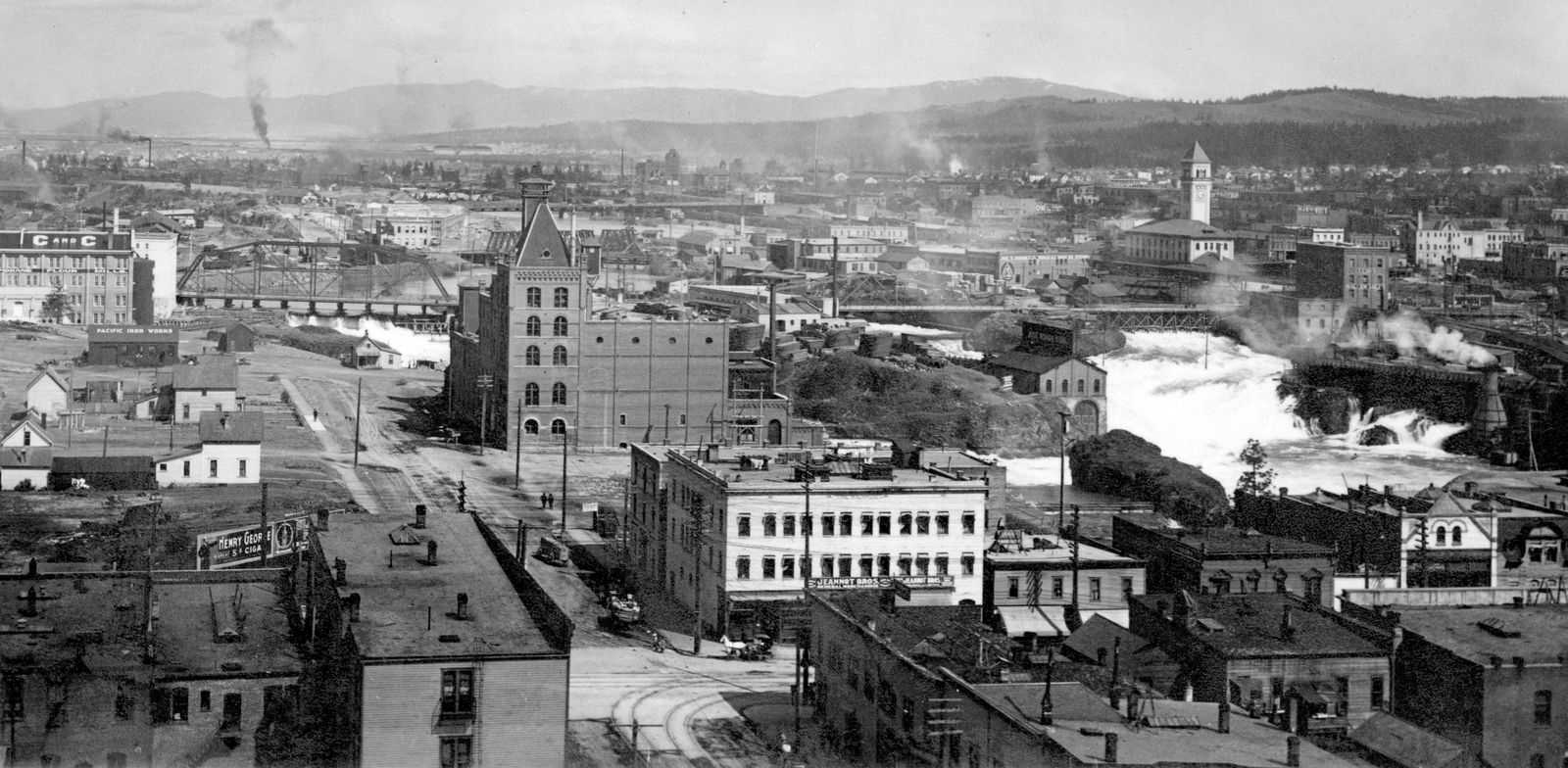
This photo, dated circa 1901, was shot from the tower of the Spokane County Courthouse looking east. Prominent in the center middle distance is the peaked roof of the Galland-Burke Brewing Company on the southeast corner of Broadway and Lincoln.
Courtesy of Spokane Public Library
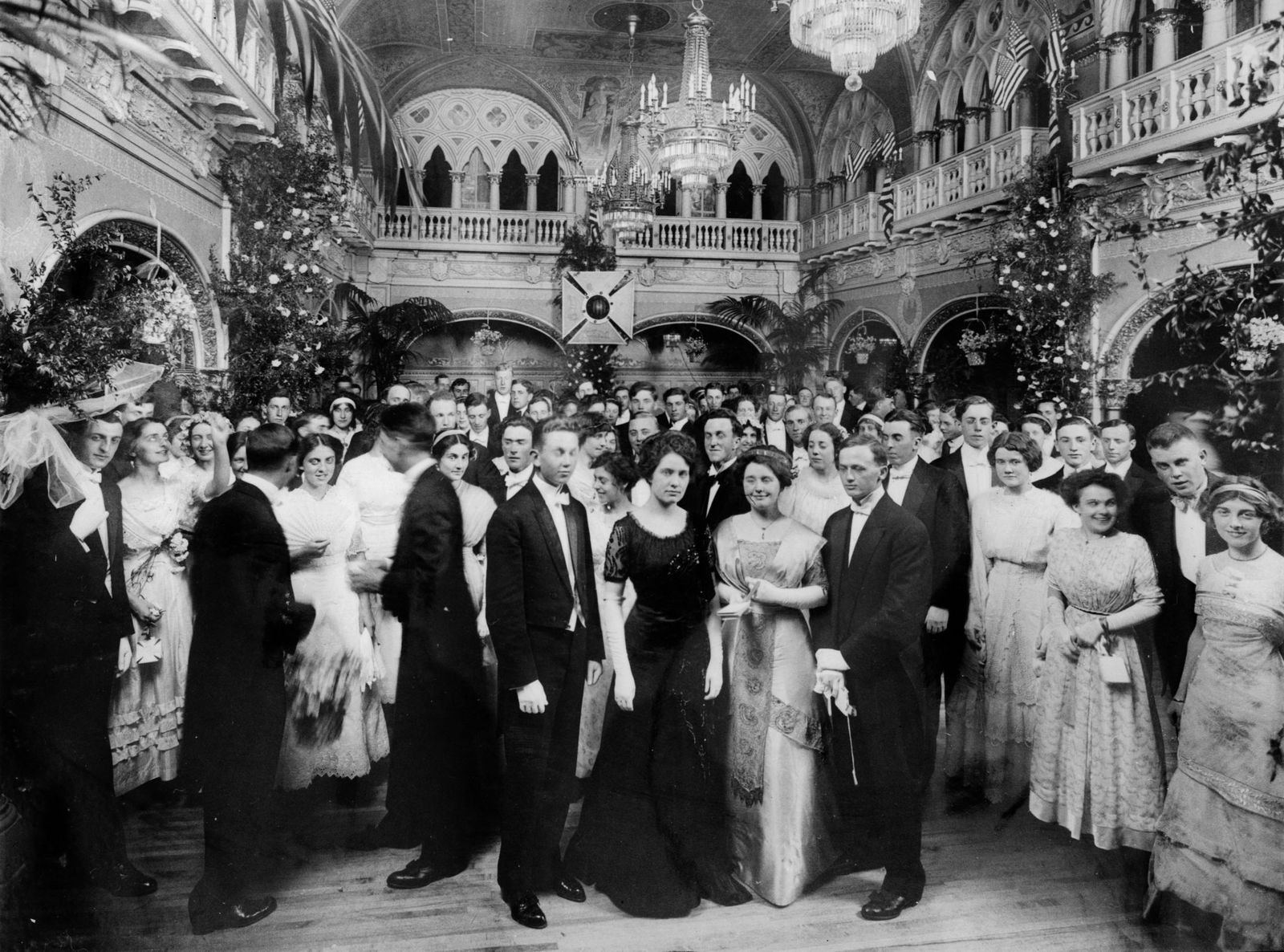
Opened in 1914 the Davenport Hotel was the society center of Spokane. A Gamma Eta Kappa party, shown here in the Hall of Doges in the early 1900s, was one of the many formal events held at the hotel.
Courtesy of the Washington State Historical Society
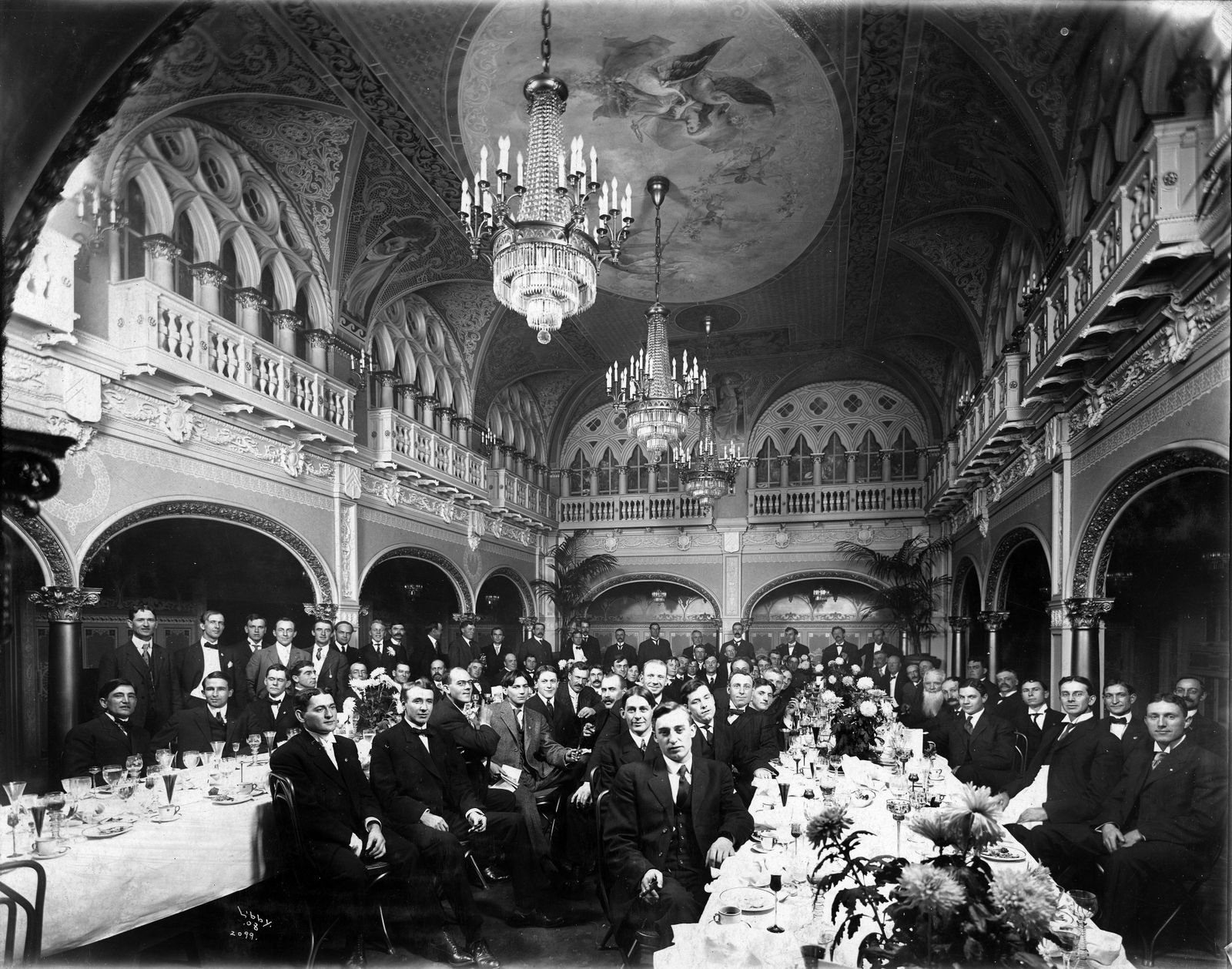
Unknown banquet at the Davenport Hall of Doges.
Courtesy of Washington State Archives
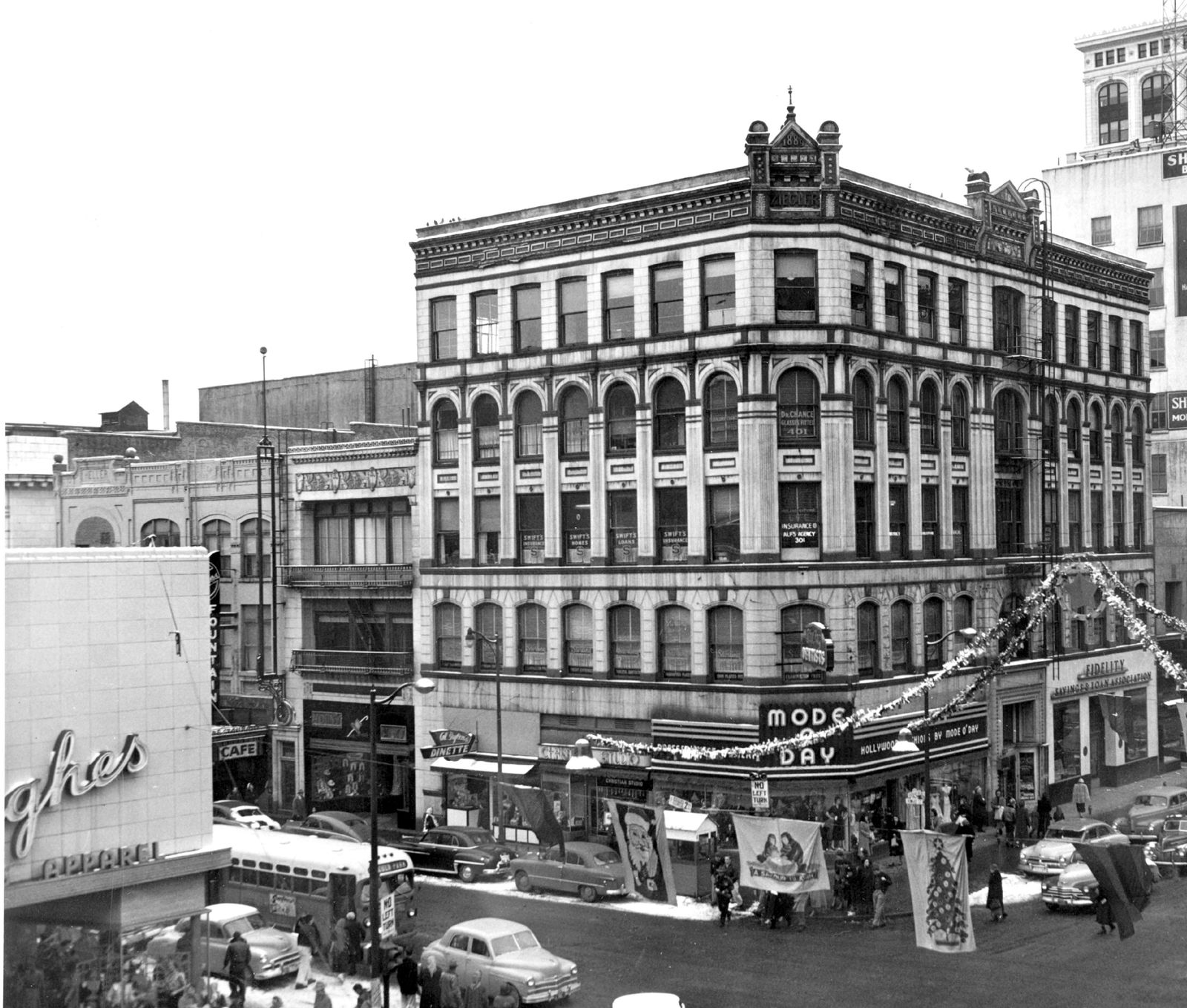
The Ziegler building at Howard and Riverside was the first major reconstructive step after the disastrous Spokane fire in 1889. Louis Ziegler presented Spokane with the city’s first skyscraper. Construction of the building began in 1889 and was finished in 1890 and was the tallest building in Spokane for one year, until the Review Tower was completed. In late 1951 the Ziegler building was razed to make room for Fidelty Savings and Loan association’s new eight story structure. That building is now occupied by Washington Mutual and other professional office space.
Photo Archive The Spokesman-Review